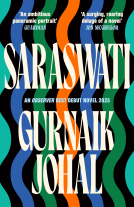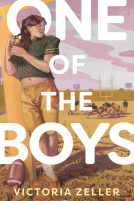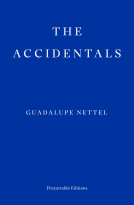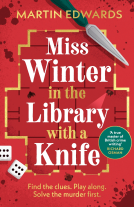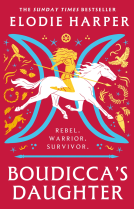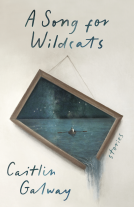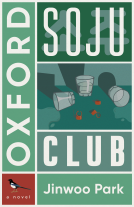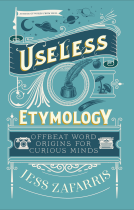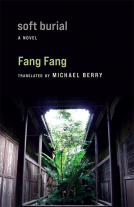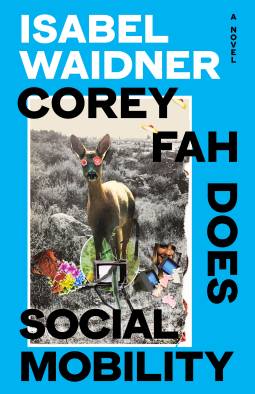
Corey Fah Does Social Mobility
by Isabel Waidner
This title was previously available on NetGalley and is now archived.
Send NetGalley books directly to your Kindle or Kindle app
1
To read on a Kindle or Kindle app, please add kindle@netgalley.com as an approved email address to receive files in your Amazon account. Click here for step-by-step instructions.
2
Also find your Kindle email address within your Amazon account, and enter it here.
Pub Date Jul 13 2023 | Archive Date Jul 14 2023
Talking about this book? Use #CoreyFahDoesSocialMobility #NetGalley. More hashtag tips!
Description
SHORTLISTED FOR THE ARTHUR C. CLARKE AWARD 2024
LONGLISTED FOR THE NOTA BENE PRIZE 2024
The radical, joyful follow-up to the Goldsmiths Prize-winning Sterling Karat Gold.
This is the story of Corey Fah, a writer on the cusp of a windfall, courtesy of the Social Evils prize committee, for whom the actual gong - and with it the prize money - remains tantalizingly out of reach.
Neon beige, with UFO-like qualities, the elusive trophy leads Corey, with partner Drew and surprise eight-legged companion Bambi Pavok, on a spectacular detour through their childhood in the Forest - via an unlikely stint on reality TV. Navigating those twin horrors, through wormholes and time loops, Corey learns - the hard way - the difference between a prize and a gift.
Both radiant and revolutionary, Isabel Waidner's fiction gleefully takes a hammer to false binaries, boundaries and borders, turning walls into bridges and words into wings. Fierce, fluid and funny, they free us to imagine another way of being.
This is a novel about coming into one's own, the labour of love, the tendency of history to repeat itself and the pitfalls of social mobility. It's about watching TV with your lover.
'A head-spinning, mind-bending roller coaster of fun, horror, and subversion. I love it' Kamila Shamsie
'Reading Waidner is like plugging into an electric socket of language and ideas' Guardian
Available Editions
| EDITION | Other Format |
| ISBN | 9780241632536 |
| PRICE | £12.99 (GBP) |
| PAGES | 160 |
Available on NetGalley
Featured Reviews
 Graham F, Reviewer
Graham F, Reviewer
I first came across Isabel Waidner in 2017 – a playfully experimental author who disassembles fictional conventions as a way of disassembling racial, nationality, sexuality and class conventions in British society - when I was one of the judging panel for the 2018 Republic of Consciousness Prize – for which we shortlisted the author for their debut novel “Gaudy Bauble”, a novel which was an integral part of their PhD Thesis. Their second novel “We Are Made of Diamond Stuff” was shortlisted for both the Republic of Consciousness and Goldsmith Prizes, before their third “Sterling Karat Gold” (which made it three RoC shortlists) won the Goldsmith Prize in 2021 with its annual award of £10,000 and its trophy designed each year by one or more of the Goldsmith University’s students (an award which due to COVID was announced on a virtual ceremony).
Now I always like to start book reviews with references to previous (or current) prize listings – but it is particularly relevant here,
Firstly as in the acknowledgments, Waidner thanks the prize organisers and judges for the award saying “Winning in 2021 – as a writer lacking the structural privileges related to class, native status and cisgender heteronormativity – has made a significant difference to my practical circumstances” – those circumstances including the chance for the first time to publish a novel – this their fourth - with a major publisher.
Secondly, and more relevantly as the novel starts with its eponymous character, an “unknown” writer, having found on an online winner announcement (which they watch in the flat they share with their partner Drew) that they have won “The Award for the Fictionalisation of Social Evils” – an award which comes with what would be an extremely welcome £10,000 prize (“Like most working-class people, I assumed, wrongly, the award’s value was monetary, rather than in its prestige and social power”.) and an unspecified trophy “a physical represttnations of the cultural capital I’d just acquired” - which they are directed to collect near a bandstand at Koszmar Circus (note that the novel is set in 2024 in an “international capital” with Central European sounding place names).
And in our opening scene, Corey Fah finds themselves in the presence of a small “neon beige” unidentified hovering object (which proves to be the elusive trophy) and even more oddly (although not for any existing fans of Waidner’s writing) a version of Bambi taken not from the Disney film of 1942 (although the characters and even dialogue of that film are integral to the novel) but more inspired by Nicole Eisenman’s slightly nightmarish arachnoid version – Bambi Gregor although here known as Bambi Pavok (after the Common Spider).
Now the other main inspiration for this novel was a Goodreads review (actually by the well known blogger and Booktuber – Eric “The Lonesome Reader” Anderson about which the author has said
A Goodreads reviewer once wrote that 'Waidner is a modern-day Joe Orton'-an outrageous compliment! Orton was a British working-class playwright writing acclaimed absurdist, irreverent and satirical plays in the nineteen-sixties. His success was short-lived-he was murdered by his gay lover at the age of 34. To a certain extent, the comparison encouraged me to write my forthcoming novel which puts Orton's autobiography in conversation with my own-in unusual ways, I suspect! Insightful or not, the comment was certainly generative.
And back at their flat, with Corey Fah followed by Bambi Pavok, Corey Fah and Drew settle down to Drew’s favourite TV show “St Orton Gets to the Bottom of It” in which the presenter Sean St Orton maintains that they were a famous 1960s playwright who escaped from a domestic violence assault by their homosexual lover in 1960 via a červí díra (my note: Czech for wormhole) – a “space-and-time-defying passageway, a trans- dimensional wormhole” – arriving at the capital in 2014 (ten year’s ago).
Their show consists of investigating (and normally overturning) guests claims to have found evidence of a červí díra – in the show Corey and Drew watch St Orton being particularly dismissive of the claims by that day’s guest that her rabbit (who immediately reminds the reader of Thumper) has appeared and disappeared in mysterious ways.
From that beginning things get if anything more complex – saying too much else would spoil a novel but the book includes (among much else):
Corey launching her own TV show to replace St Orton’s – a show with the same title as the book and which effectively feature their attempts to both finally get hold of their trophy as well as to capitalise on their award while they are still the current holder (and which plays down against a countdown of the time until the next annual award)
Some Twitterpating – from Friend Owl’s explanation in the Bambi film – and which allows Corey to discuss “the fact that people thought nothing of exposing their babies to highly heterosexualised content – like Bambi – while supporting legislation against the ‘promotion’ of homosexuality to minors in all its variable historical guises.”
Time traveling down the wormholes which turns into ten minute alternate realities
The blurring of the autobiographies of Corey Fah, Bambi Pavok, Joe Orton with that of the author – particularly as each has to make their way in the International Capital, with all of the societal disadvantages they have to deal with.
Venison Frikadellen Fast Food Franchise with the burgers flipped by a False Widow spider
An exploration of prize cultures, artistic recognition and the interaction with privilege, if there is perhaps a key part of the novel it is Corey’s theory “about the redistribution of cultural capital leading to irregularities in the space-time continuum, affecting disadvantaged prize recipients disproportionately.”
This will be the first time that Waidner’s work will not be shortlisted for the Republic of Consciousness Prize (it is not eligible), could I suspect be the third time it is shortlisted for the Goldsmith’s Prize (the prize is well known for repeat nominations) – but more importantly it will I hope and strongly expect be the first time it makes at least the longlist for the Booker Prize.
Highly recommended – like all of the author’s novels a description can make their work feel either daunting or didactic – when in fact neither could be further from the truth. Instead like all Waidner’s novels it is best first read through to get a feel for the imaginative and thematic landscape; then immediately re-read; and then discussed with others..
Isabel Waidner was only familiar to me as the winner of the 2021 Goldsmith's Prize for their novel Sterling Karat Gold. This new novel was sold to me through a glowing review by Kamila Shamsie. With its title I had no idea what to expect, but I was intrigued and excited to discover a new literary voice.
Isabel Waidner is an experimental, playful novelist, and their novel is full of many contemporary references points. Corey Fah is not a novel in its traditional sense - it feels like something very modern, very 21st century. Yet one of they key cornerstones of this work is the 1942 film Bambi.
This is a very difficult book to review without spoiling many of its surprises. Let's just tell you it involves time travel, alternate realities, UFOs and chat shows. That makes it sound sci-fi. It isn't that. Let's just tell you it is a novel about literary values, prize culture, and artistic privilege but that makes it sound elitist. It isn't that either.
So what is Corey Fah Does Social Mobility? It is a unique, funny, challenging, and charming slice of modernity. It is the novel which could easily bring Waidner their third Goldsmith's nomination. It could easily bring them their first Booker longlist. It is that good.
Thank you to the publishers and Netgalley for the ARC.
Corey Fah Does Social Mobility is an experimental novel, very much in Waidner's typical style, which explores writing, cultural capital and social mobility, trying to balance things in your life, reality TV, and an eight legged horror a bit like Bambi. Corey Fah has won a literary prize, but is unable to collect the trophy, because it keeps flying away. Corey's partner Drew just wants to watch their usual favourite daytime TV show, but it turns out the host has links to the strange occurrences when Corey tries to get the trophy, and it seems that winning was only the start of Corey's problems.
I loved Waidner's previous novels, We Are Made Of Diamond Stuff and Sterling Karat Gold, and I might've enjoyed this one even more, in which they manage to combine dreamlike, surreal happenings and a horror-style version of Bambi with a sharp attack on class and culture, borders and identities. The book also provides a sweet domestic love story at its heart and an exciting detour into an alternate history for Joe Orton, amongst other things. There's so much stuff packed in, but there's only a few main references to understand, making it accessible for a book that takes its source material so playfully.
This is a book that is delightful to read, cutting yet funny, and also bittersweet, especially for anyone who has dreamed of achieving things that feel far too out of reach. The experimental and surreal style blends the political and domestic with so many little details that cut into the binaries and boundaries we encounter. I just love how Waidner's books seem to enact a kind of non-binary poetics in which boundaries are there for disrupting and gender, like many other facets of identity, is there for people to do with what they will, in a revolutionary way. An exciting book, but also a strangely sweet story of trying to find your way even when the prize literally seems trapped by Kafkaesque rules.
 Paul F, Reviewer
Paul F, Reviewer
"I tested my theory on them, about the redistribution of cultural capital leading to irregularities in the space-time continuum, affecting disadvantaged prize recipients disproportionately."
My first encounter with Isabel Waidner's work was in September 2017 when their Gaudy Bauble was entered, and later shortlisted, for the 2018 Republic of Consciousness Prize, of which I was then a readers-panel judge.
The novel began with the memorable, and in the light of Waidner's profile since, historic, line: A formidable micro-horse sprang across a Formica tabletop. By the end of a first paragraph that included the designs on a sweater becoming animate, and which concluded and this was just the beginning, I realised this was something very different to anything I'd read previously, "Awkwardgarde fiction, potentially trailblazing" as the authorial stand-in put it before the narrative baton was seized from them by a pegasus, and I must admit it took me several reads of that first page, and a read of the author's PhD thesis, before I really understood what they had achieved: Transliterary, a new genre of its own, "sharing agency (the capacity to influence the narrative) across assemblages of human and nonhuman, fictional and real, material and semiotic 'actors' ... to subvert normative versions of authorship, intentionality, causality, and process."
By the time of Waidner's 2nd novel We are Made of Diamond Stuff, I was convinced that they were, in the words that opened my review, Britain's most exciting and important writer, an impression that was fully confirmed by Stirling Karat Gold, which won the one prize that for me compares to the Republic of Consciousness in its literary ambition, the Goldsmiths Prize.
And the winning of that Prize, combined with an authorial comparison in a Goodreads review by a well-regarded blogger was the starting point for this, Isabel Waidner's fourth novel, a brilliant exploration of one of the most neglected barriers to social mobility, cultural capital.
The novel opens in an International Capital city:
"I found myself at Koszmar Circus, beneath the old bandstand’s prominent, pyramid-shaped roof, contemplating a UFO. When I say UFO I don’t mean spaceship. I mean it in the literal sense, Unidentified Flying Object. Circa half a metre tall, it hovered directly in my eyeline. It radiated neon beige, what a concept. I just stood there, one hand on my head, the other on my hip, considering the likelihood.
Was still thinking on it, still processing, when I noticed someone or something moving behind me. I turned around and saw it was Bambi. When I say Bambi I mean Bambi, but not as we know him. On top of his famously unsteady legs, he had four spider’s legs, grand total was eight. Besides, he had multiple sets of eyes, like that seraph-filtered kitty on Instagram, or most common spiders: pavouk, in one Euro language. The fawn looked at me, batting four sets of lashes, giving disarming smile. Off he went, hustling around the bandstand, rattling the local blue tits to the core.
My modus operandi was disassociation and tonight was no exception."
Our first-person narrator, the blogger Corey Fah, has been awarded the 2024 Award for the Fictionalisation of Social Evils for their novel: "Headlines ranged from unknown Fah wins £10k prize for ‘mind-bending’ debut novel to blogger takes major literary award. I couldn’t help notice the disproportionate number of mentions of the ‘inclusion agenda’ that the prize had adopted, allegedly". They have gone to collect their trophy, which proves to be the UFO, which they don't have the cultural capital to recognise is how the literary scene, in this novel's world, operates.
The arachnoid Bambi in this opening scene is inspired by Bambi Gregor (1993) by Nicole Eisenman, itself, I assume, inspired by Kafka's Gregor Samsa.
But the blue birds in this passage (and those in Bambi the Movie) provide a key link to the 2nd key strand of the novel. Corey and their partner Drew share a regular ritual of watching a daytime TV show, St Orton Gets to the Bottom of It, hosted by a presenter with the pseudonym Sean St Orton:
"Sean purported he used to be shit-hot playwright in the 1960s. He ’d gone by a different name then, I forget, not sure I ever knew. Said he’d escaped a domestic violence situation in ’67, his homosexual lover coming for him in the studio flat the couple had shared on Kalapács Road, coincidentally in the Huàirén borough, not far from estate. He’d got out by disappearing through what he ’d termed a červí díra –a space-and-time-defying passageway, a trans-dimensional wormhole – that earlier that year had opened up in his flat inexplicably, on the floor by his bed."
"Sean", who supports a tattoo of a blue swallow on his stomach, is of course a version of Joe Orton in an alternative timeline where he escaped the real-life fate of the playwright. From Prick Up Your Ears: The Biography of Joe Orton by John Lahr describing the murder scene:
"Two stools, two chairs, two single divan beds, and now, so the police discovered, two bodies. The only identifying mark on Orton's body was a blue swallow tattooed over his appendix scar. Orton was planning to refurbish the design. He wanted a flock of swallows on the wing arching across his stomach like porcelain ducks over a mantelpiece."
The swallow tattoo is also clearly visible on Patrick Proctor's 1967 sketch of Orton, which was enclosed in the programme for Orton's play Crimes of Passion. The copy in the British Library particularly notable for the swallow having been coloured in with a blue biro by the director of the play, Peter Gill
And when one digs further one starts to create more mental links:
Later in the novel, Bambi Pavok's leporine companion Fumper plays a key role, including some twitterpating activity, and another famous blue "bir, bir! Birrd!" (to use Bambi Pavok's stumbling first words) is Larry, Twitter's famous logo (at least until Elon Musk decided to temporarily change it to pump crypto currency), although in the novel Corey is more active on Substack.
And there is also a neat but coincidental link from the St Orton Gets to the Bottom of It TV show to the TV show Get Aquinas In Here which is a key element of the novel The Doloriad by Missouri Williams which won the 2023 edition of the Republic of Consciousness Prize, where Waidner themselves was a judge for this same prize that had first recognised their work (and I'm now a Trustee of the Prize).
In the novel St Orton was also the winner of the The Award for the Fictionalisation of Social Evils in 1967. In real-life Orton's own surrealist novel Head to Toe was published posthumously and was only recognised by awards in 2010 when it was longlisted for the The Lost Man Booker Prize, "a one-off prize to honour the books that missed out on the opportunity to win the Booker Prize in 1970" due to a shift then in prize year eligibility. Given the rules require the author to be living, I think Orton's book would not actually have been eligible and Waidner's own take on the book suggests it probably wasn't to the standard of his plays:
"Researching my latest novel-in-progress, I re-read British sixties playwright Joe Orton’s entire back catalogue, including his early novel Head to Toe. First published in the seventies, it was written before his hugely successful satirical plays including Loot, known for their hilarious social critiques and stark realism. This, however, is the story of Gombold, who finds himself in the head of a giant a hundred miles high, yes, and sets about traveling downwards, that is, along the trajectory of the expansive body.
En route, Gombold encounters a gender-bending policewoman; finds himself in an assassination squad targeting the prime minister; and enlists in a war between the left and right butt cheeks. No, really. I love and admire Joe Orton—a gay working-class literary maverick, an autodidactic ex-convict—and consider his work a significant part of the cultural fabric that makes writers like myself possible now. But Head to Toe? Obscure for a reason. I wish Orton, who was killed by his lover at the age of just thirty-four, had lived long enough to make another, late-style attempt at surrealism. He would’ve nailed it."
These last items may be to read into the novel things that aren't there. Although Sean St Orton and Corey Fah towards the novel's end pass on the torch of creativity, and a future version of the prize, to another character from the 'swampy' part of town, Mallory or Malachi Hölderlin. But such are Waidner's creative powers that the reader, or this reader at least, can't help but go on their own chains of association, or is it disassociation.
However this is a tighter and more self-contained novel than the author's previous works. Really the only references the reader needs to know are Bambi the Disney Movie, and elements of Joe Orton's own biography.
But this is a novel that demands to be read not just studied - and is an ideal starting point for Waidner's work.
And unlike Orton's belated Booker recognition 40 years after his book was posthumously published, this is a novel that demands to be immediately recognised by the 2024 Booker Prize.
6 stars if I could but rounded down to 5 because Netgalley.
 Owen M, Reviewer
Owen M, Reviewer
Corey Fah has won a literary award. To verify their identity and receive their prize money, they’ll have to collect their trophy - a UFO that flies off when they try to retrieve it. Instead, they end up taking home Bambi Pavok - a strange deer/spider hybrid that has come through a wormhole.
This short novel is so utterly bizarre that writing a coherent review feels like quite a challenge. Waidner’s writing is smart, funny and surreal. The novel is packed with so many small details that it feels impossible to really get everything that it has to offer on a first reading. This, however, is not a criticism - this is exactly the kind of novel that you’ll want to revisit.
The world of the novel is eerie and strange, set in a non-specific city somewhere in Europe, 2024 - and also a forest in the 60s. Waidner plays with concepts of time, time travel, wormholes and time loops with no concern of getting too bogged down in logistics; it doesn’t matter how or why things are happening - they’re happening, just go with it.
This is a really wild, fun novel, covering a lot of big ideas without ever feeling like a chore. I loved it, and I think it’ll only improve with a reread.
Thanks to Netgalley and Penguin for the e-ARC!
“*I*, was and had been the presenter of *Corey Fah Does Social Mobility*, a show without history. Nothing to do with the fact that each alternate reality lasted no more than ten minutes, […] just normal erasure. The world moved on at lightning speed, time waits for no man, et cetera, we did not give a fuck about those who’d come before in the international capital during this distinct era.” The best part of any Isabel Waidner novel is that moment where you realise that you have absolutely no idea what the fuck is going on but you find yourself reading on helplessly like some kind of a bewilderment junkie, and their latest, imminent novel Corey Fah Does Social Mobility is simultaneously the most bewildering and the most addictive. Corey Fah, lately recognised by an award for the fictionalisation of social evils, finds their life thrown into abject chaos when they fail to seize their neon beige UFO trophy; from there, Corey’s life with their partner Drew falls into disarray, with the arrival of the seraph-spider deer Bambi Pavok (a la Nicole Eisenman’s Bambi Gregor artwork), their unfortunate visit to a talk show about spatiotemporal irregularities hosted by someone who may or may not be the murdered queer writer Joe Orton, and a gradual sublimation into a world of spacetime portals, time loops, Kalashnikov-wielding bunny-rabbit-mourning avenging angels and the repressed traumas of youthful emigration. This undaunted novel about embracing the ugliness of our pasts and resisting the dark assimilating forces of our present moved me just as much as it befuddled me, and what more can we want? “I was reading as if my life depended on it, and it did, it did.” I am and always will be an Isabel Waidner stan. (Six stars out of five.)
Probably the best thing I'll read this year. A novel about someone from an ordinary, unprivileged background, non-binary and working class, winning a prestigious literary award and reality literally tearing itself apart as consequence. It’s brilliant. It’s too busy to be impressed by its own wild surrealism. It takes you into its world like a friend describing a problem at work. It’s pace-perfect. I think it gave me more interesting dreams. Waidner is The Future. Suitable fans of Kurt Vonnegut and all those who care about The Future.
 Media/Journalist 698842
Media/Journalist 698842
Waidner is in perfect command of every aspect of this bitingly sharp social satire. It's surreal, clever and funny - not to mention very, very acute on the messages the author is sending about 'social capital'. Sit back and enjoy the ride.
 Jess D, Reviewer
Jess D, Reviewer
I loved this book. My first read of Waidner and I will certainly be picking up more.
Usually I would give a plot summary but I think potential readers will enjoy the absurdity more if they go in without prior knowledge.
Instead I’ll say if you enjoy absurd and hilarious satire, the bizarre and surreal, or wormholes, you should definitely pick this up.
Pick up this book up if: you’re on your commute to your office job to go to meetings that could’ve been emails, or you want to read an examination of class and privilege with a spider deer.
Thank you to NetGalley and the publishers for an ARC in exchange for my honest review.

